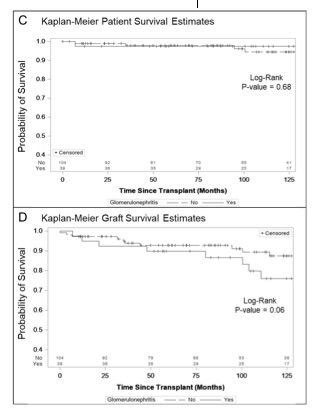Kidney Transplant Outcome between Identical Twins in USA from 2001-2017
Starzl Transplant Institute, Univ of Pittsburgh Med Center, Pittsburgh, PA
Meeting: 2019 American Transplant Congress
Abstract number: C53
Keywords: Graft survival, Kidney transplantation, Outcome, Recurrence
Session Information
Session Name: Poster Session C: Kidney Complications: Late Graft Failure
Session Type: Poster Session
Date: Monday, June 3, 2019
Session Time: 6:00pm-7:00pm
 Presentation Time: 6:00pm-7:00pm
Presentation Time: 6:00pm-7:00pm
Location: Hall C & D
*Purpose: This study provides the outcome of Identical-Twin (IT) Kidney-Transplants (KT) in the USA.
*Methods: The data from U.S. Census Bureau, National Center for Health Statistics, Annual Trustees Report by the Social Security Administration and SRTR were obtained. The SRTR data includes information on donors, wait-listed candidates, and transplant recipients in the U.S. submitted by the members of the OPTN.
*Results: The US population from 1959-2000 has grown from 177.8-282.2 million , birth rate has decreased from 23.7-14.1/1000/year and twin-births has increased from 17.8-29.3 per/1000 live births. The monozygotic birth rate/live birth is constant at 0.3% . Based on the annual birth rate from 1959-2000 we estimated 2.66 million dizygotic-twins and 433,010 monozygotic-twins between 18-60 years will be alive in 2019. The projected prevalence of ESRD among dizygotic and monozygotic twins in 2019, is estimated to be 4,561 and 691, respectively. From 2001-2017, a total of 97,242 Living Donor (LD) and 165,873 Deceased Donor (DD) kidney transplants were performed in US; and 143 KT were performed between IT. This is based on SRTR report and the concordance between the donor-recipient pair for sex, race, blood group type and 6 HLA Ag match. The rate of LD-KT was 1.5/1000 (1/667) for LD-KT and 0.54/1000 (1/1852) for all LD+DD-KT. Among the IT transplant pairs: 45.5% were males, 83.9% Caucasians, average age at transplant was 36.7±13.5 years, and 30% had GN as the cause of ESRD. During the follow-up, 9(6.3%) died and 14(9.8%) lost their kidney allograft. The Kaplan-Meier patient and graft survival estimates are shown in Figure A/B. The survival estimates according to native kidney diagnosis: GN vs. No-GN showed similar patient survival. However, 10-year graft survival was 75.9% among those with GN vs. 87.5% among non-GN (p=0.06) Figure C/D. Equivalent patient survival with lower graft survival among recipients with GN suggests that recurrent GN may the cause of graft failure. There were no differences in graft survival according to age, sex, dialysis duration.
*Conclusions: Excellent long-term outcome of KT was noted between IT. Lower graft survival with similar patient survival among recipients with GN suggests higher rates of graft failure secondary to recurrent GN.
To cite this abstract in AMA style:
Jorgensen DR, Hariharan S. Kidney Transplant Outcome between Identical Twins in USA from 2001-2017 [abstract]. Am J Transplant. 2019; 19 (suppl 3). https://atcmeetingabstracts.com/abstract/kidney-transplant-outcome-between-identical-twins-in-usa-from-2001-2017/. Accessed December 12, 2025.« Back to 2019 American Transplant Congress


